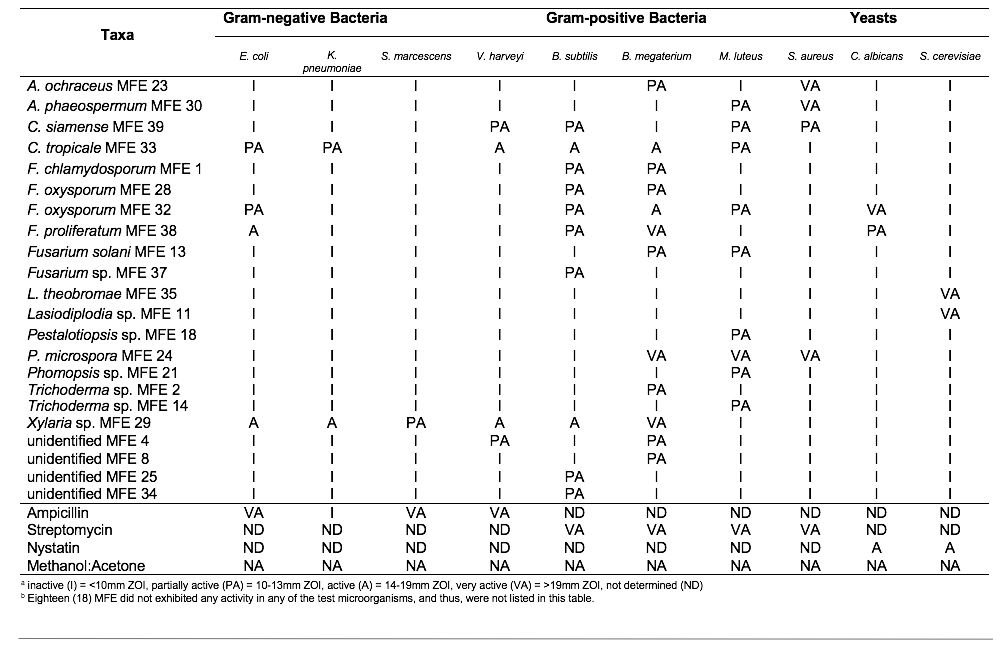VOLUME 11 (Supplement)

Philipp. Sci. Lett. 2018 11 (Supplement) 028-036
available online: July 13, 2018
*Corresponding author
Email Address: tedelacruz@ust.edu.ph
Date Received: September 01, 2017
Date Revised: March 14, 2018
Date Accepted: April 04, 2018
ARTICLE
Antimicrobial activities of crude culture extracts from mangrove fungal endophytes collected in Luzon Island, Philippines
by Llewelyn S. Moron1,2, Young-Woon Lim3, and Thomas Edison E. dela Cruz1,2*
1The Graduate School, and 2Fungal Biodiversity, Ecogenomics and Systematics Group,
Research Center for the Natural and Applied Sciences, University of Santo Tomas,
España, Manila 1008 Philippines
3School of Biological Sciences, Seoul National University,
Gwanak-Gu Seoul 08826, South Korea
Research Center for the Natural and Applied Sciences, University of Santo Tomas,
España, Manila 1008 Philippines
3School of Biological Sciences, Seoul National University,
Gwanak-Gu Seoul 08826, South Korea
Mangrove fungal endophytes (MFE) are potential sources of bioactive metabolites that can be tapped by local pharmaceutical companies in the development of new drugs. In this study, 40 selected MFE, previously isolated from healthy stems and roots of 12 host mangrove species, were identified based on morphology and/or ITS sequence analysis and cultured for the production of bioactive secondary metabolites. The common MFE identified were Arthrinium phaeospermum, Colletotrichum siamense, C. tropicale, Fusarium oxysporum, F. chlamydosporum, F. proliferatum, F. solani, Lasiodiplodia theobromae, Nodulisporium sp., Paecilomyces formosus, Penicillium citrinum, and Pestalotiopsis microspora. The secondary metabolites were extracted from mycelial mass of MFE grown in vitro using liquid cultures and screened for antimicrobial activities against eight bacterial and two yeast species using the paper disk diffusion and microdilution assays. Twenty-two MFE exhibited inhibitory activities against at least one of these test microorganisms. Results also showed that Pestalotiopsis microspora (MFE 24) showed strong antimicrobial activities against gram-positive bacteria while species of Lasiodiplodia were very active against Saccharomyces cerevisiae with minimum fungicidal concentration of <7.8 μg/mL, indicating their potential as sources of bactericidal and/or fungicidal compounds.
© 2025 SciEnggJ
Philippine-American Academy of Science and Engineering